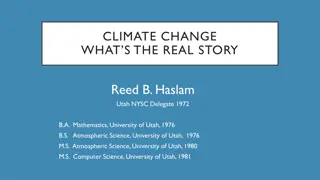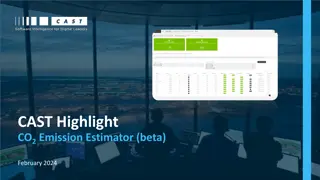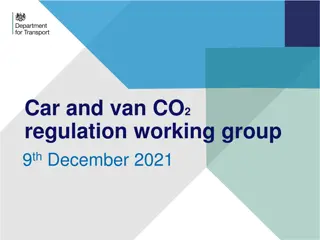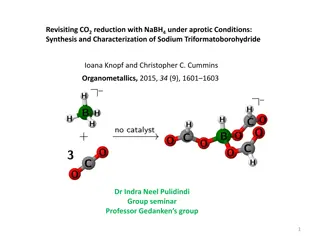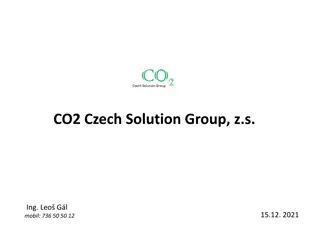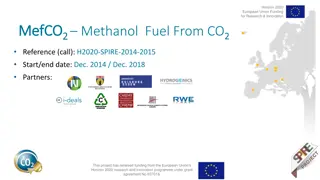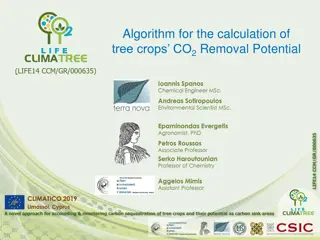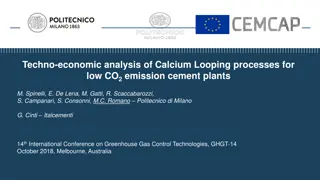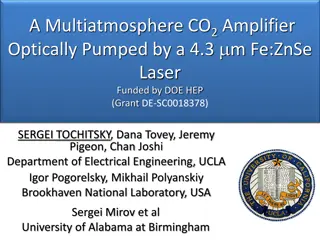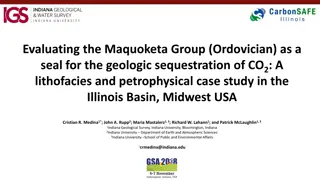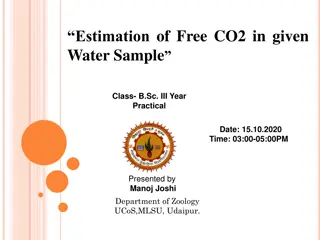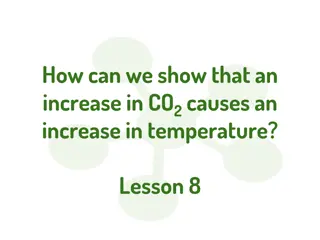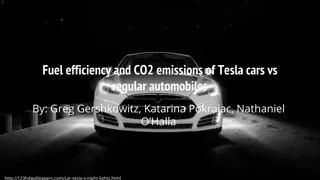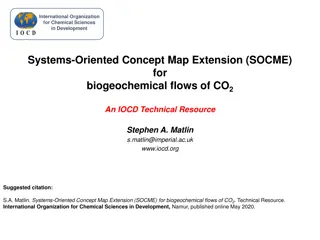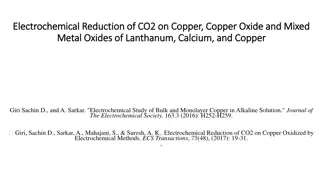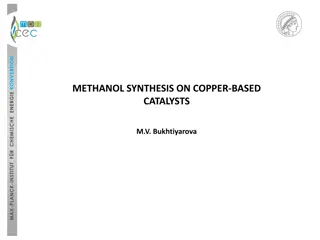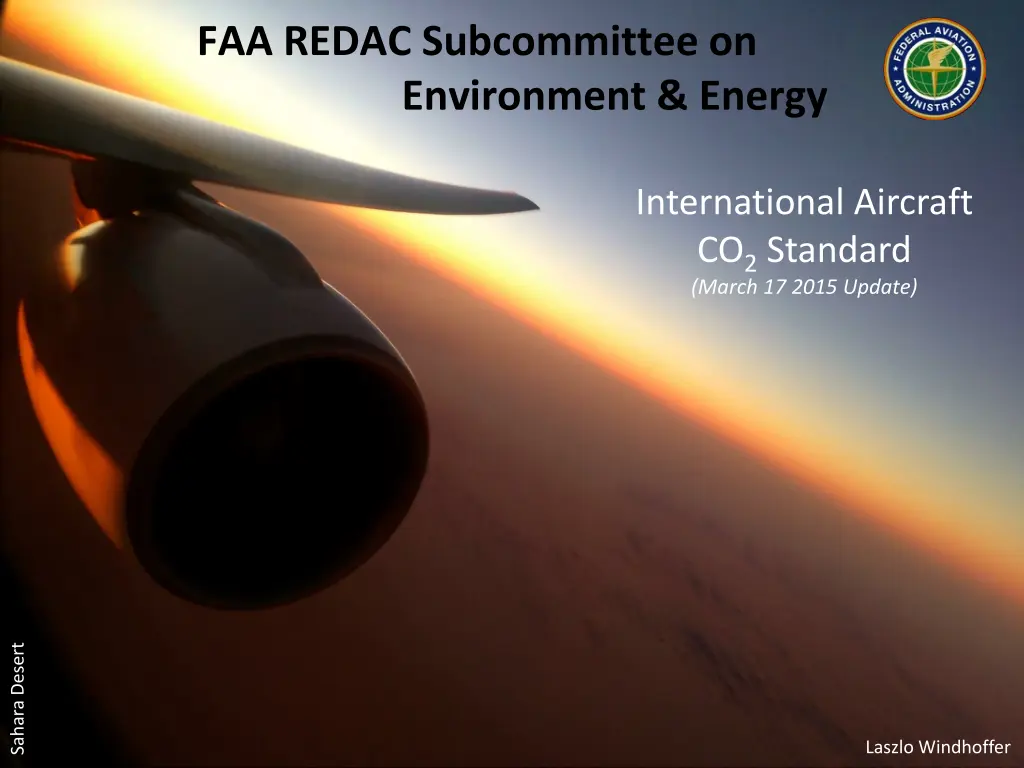
Development of International Aircraft CO2 Standard - Overview
Explore the development of an international aircraft-level CO2 standard by the International Civil Aviation Organization to address aviation's impact on climate change. Learn about objectives, milestones, and technologies aimed at reducing greenhouse gas emissions in aviation.
Download Presentation

Please find below an Image/Link to download the presentation.
The content on the website is provided AS IS for your information and personal use only. It may not be sold, licensed, or shared on other websites without obtaining consent from the author. If you encounter any issues during the download, it is possible that the publisher has removed the file from their server.
You are allowed to download the files provided on this website for personal or commercial use, subject to the condition that they are used lawfully. All files are the property of their respective owners.
The content on the website is provided AS IS for your information and personal use only. It may not be sold, licensed, or shared on other websites without obtaining consent from the author.
E N D
Presentation Transcript
FAA REDAC Subcommittee on Environment & Energy International Aircraft CO2Standard (March 17 2015 Update) Sahara Desert Laszlo Windhoffer
Background & Objectives Concerns over aviation s impact on climate change Aircraft contribution to greenhouse gas emissions may be reduced via: Aircraft Technologies, Operational Improvements, Alternative Fuels, Policies International aircraft-level CO2 standard is being developed under the International Civil Aviation Organization s (ICAO) Committee on Aviation Environmental Protection (CAEP) Encourage CO2 emissions reductions beyond what would be achieved by expected market forces Encourage fuel burn reduction technologies Avoid unintended consequences on how aircraft are operated Federal Aviation Administration 2
Near-term CO2 Standard Schedule 2012 2013 2014 2015 2016 CO2 CE Initial Analysis (MDG & FESG) Nov 2015 Sample Problem Analysis (MDG & FESG) CE ANALYSIS CO2 CE Final Analysis (MDG & FESG) MDG FESG SG SG SG CAEP9 CAEP10 TECH ANALYSIS STRINGENCY OPTION DEVELOPMENT WG3 INDUSTRY RESPONSE DEVELOPMENT CO2 SCALING METHOD DEVELOPMENT ANALYSIS PREPARATION SP WG3/WG1 SP WG3/MDG Analysis Framework WG3/FESG/MDG MDG/FESG Analysis Cases Production Assumptions FESG In-Production/ Reporting Req ts CO2 STANDARD WG3 WG3 Draft ETM (if req d) WG3 ICAO ANNEX 16 VOL. III (draft applicability & regulatory limit) Insert Applicability & Limit CERT PROCEDURES DATA Metric Values Sample Problem Data CE Analysis Data Forecast, Retirement Curves, metric values, Industry Response, CO2 Scaling Method
Major Milestones to-date (1) July 2012: CO2 Metric System in May 2012 Instantaneous metric based on specific air range (e.g. distance / fuel mass), evaluated at 3 weights and corrected by floor area February 2013: Draft ICAO Annex 16 Vol. 3 (i.e. CO2 certification requirement) Draft flight test procedures and measurement methodology November 2013: Stringency Options Assessed curve shapes for various aircraft types Defined boundaries and potential stringency options for use as the basis of CAEP CO2 cost effectiveness analysis Notional CO2 standard stringency options: (i.e. regulatory levels) Federal Aviation Administration 4
Major Milestones to-date (2) September 2014: Technology responses Specific aircraft technology responses (pass/fix/fail), and associated non- recurring costs September 2014: Draft, wide-range of in-production (InP) applicability options Scope, Dates of Applicability, Triggers, Regulatory Level(s) Processes: No in-production (InP) applicability and no voluntary action Voluntary Reporting Voluntary Type Certification Mandatory Reporting Mandatory Type Certification of selected InP types Mandatory Type Certification of all InP types September 2014: Modeling framework (scenario cases / data) for CAEP CO2 cost effectiveness analysis Federal Aviation Administration 5
Applicability to In-Production Airplanes Current work is focusing on mandatory in-production (InP) applicability options with a Type Certification (TC) process September 2014 draft options remain as possibilities Key elements of the mandatory, TC-based InP applicability options include: Scope: Same Max Take-Off Mass range as for NT Dates of Applicability: 2023, 2025, 2028 Triggers: Certificate of airworthiness and/or change criteria Regulatory Level: Single or separate levels for InP/NT Process: Type Certification Options should aim for an appropriate balance between costs, administrative burden and the robustness of data Federal Aviation Administration 6
CO2 Standard Analysis Framework Cases consider applicability to new types (NT) in 2020 or 2023, and to in-production types (InP) in 2023, 2025 or 2028 Case for NT and InP: Full Technology Response / Out of Production Analysis of stringency options using all technology responses defined by WG3/WG1 and aircraft are assumed to go out of production at the implementation dates if they cannot be made compliant to a stringency option level. To inform both InP and NT applicability. Case for NT-Only: Alternative Response / Production Analysis of stringency options at the implementation dates for NT-only applicability using responses informed by market considerations since manufacturers would not have a legal deadline to bring InP types to levels required under an NT-only standard. Thus, although an aircraft may be technically eligible for response, in practice market forces could influence the manufacturer to not have some aircraft types respond; for example, when the costs to respond outweigh the benefits generated by the improvements. Federal Aviation Administration 7
CO2 Standard Next Steps Mid/End 2015: Complete CAEP main cost effectiveness analysis round 1/round 2, respectively End 2015: Develop a Public CO2 Databank End 2015: Finalize InP applicability options End 2015: Finalize outstanding topics re Annex 16 Vol. 3 Draft environmental technical manual, change criteria, specialized aeroplane types Feb 2016: Insert applicability and regulatory level into final Annex 16 Vol. 3 Feb 2016: Decision on applicability and regulatory limit End 2018: Annex 16 Vol. 3 implemented in ICAO Member State legislative frameworks Federal Aviation Administration 8
Questions? Federal Aviation Administration 9
CO2 Metric System CO2 emissions fuel burn Main drivers of CO2: Two major metric types categories were assessed: Instantaneous and Mission Performance Measurement CAEP technical analyses resulted in selection of an instantaneous metric based on: Specific Air Range (e.g. distance / fuel mass) evaluated at 3 weights Correlated with Maximum Take-Off Mass (i.e. normalize for fairness) Corrected by a floor area factor Key criteria such as fairness, ease of certification, account for fundamental aircraft performance, and limiting unintended consequences Federal Aviation Administration 10

